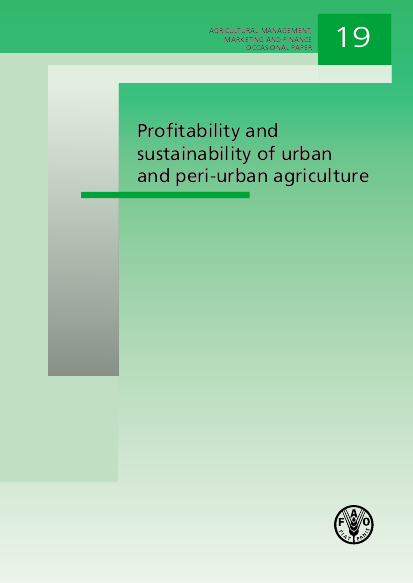
Urban agriculture (UA) is a dynamic concept that comprises a variety of livelihood systems ranging from subsistence production and processing at the household level to more commercialized agriculture. It takes place in different locations and under varying socioeconomic conditions and political regimes. The diversity of UA is one of its main attributes, as it can be adapted to a wide range of urban situations and to the needs of diverse stakeholders. UA or urban and peri-urban agriculture (UPA) as it is referred to in this paper, can make important contributions to social, economic and ecological objectives of sustainable urban development (SUD).
UA is increasing in cities in developed countries as well as in developing countries, and the number of cities revising existing policies or formulating new policies and action programmes on UA is growing rapidly (van Veenhuizen, 2006). However, many urban farmers around the world operate without formal recognition of their main livelihood activity and lack the structural support of proper municipal policies and legislation. Appropriate policies and regulations are required to enhance the potential of agriculture in cities and mitigate its potential risks. The challenge is for UPA to become part of SUD and to be valued as a social, economic and environmental benefit rather than a liability.
To support this development, an overview is provided of the role and importance of UPA on the basis of three studies. In 2002, two assessments of the profitability and sustainability of urban farming were undertaken for the Food and Agriculture Organization of the United Nations’ (FAO) Rural Infrastructure and Agro-Industries Division ( AGS), by the International Water Management Institute (IWMI) (Ghana Office) and the French Agricultural Research Centre for International Development (CIRAD). These studies were carried out in selected urban and peri-urban sites in Ghana, West Africa (Gyiele et al., 2002) and in Thailand, Asia (Vagneron et al., 2002). The studies attempted to contribute to a greater understanding of issues and opportunities characterizing intra-urban and peri-urban farming from a long-term perspective. In a third study, Danso et al. (2003) sought to identify and typify urban farming systems (UFSs) and discuss indicators to measure and assess profitability and sustainability of urban farming, with a focus on Africa.
Resource collections
- UN Habitat - Urban Response Collection
- Urban Response - Urban Crisis Preparedness and Risk Reduction
- Urban Response Collection - Community Engagement and Social Cohesion
- Urban Response Collection - Economic Recovery
- Urban Response Collection - Environment and Climate Change
- Urban Response Collection - Housing, Land and Property
- Urban Response Collection - Urban Crisis Response, Recovery and Reconstruction
- Urban Response Collection - Urban Resilience